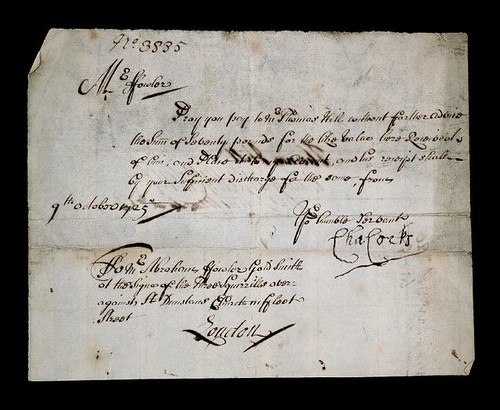
PREV ARTICLE
FULL ISSUE
PREV FULL ISSUE
FEATURED WEB PAGE: ENGLISH BANKING HISTORYThis week's Featured Web Page is the British Museum's introduction to English banking history.The origins of English banking can be found in the activities of the London goldsmith-bankers during the period 1650 to 1700. London goldsmith-bankers initiated and developed the basic principles of accepting deposits on which interest was paid, made loans from the funds supplied by such deposits, issued their own promissory notes (or banknotes) and allowed depositors to access their accounts by use of ‘drawn notes’ (or cheques). The note illustrated here is an example of an early drawn note or cheque. This example is dated 9 October 1725 and is addressed to Abraham Fowler, Goldsmith, who was a goldsmith-banker at the ‘Sign of the Three Squirrels…Fleet Street’. 
www.britishmuseum.org/research/publications/
|
